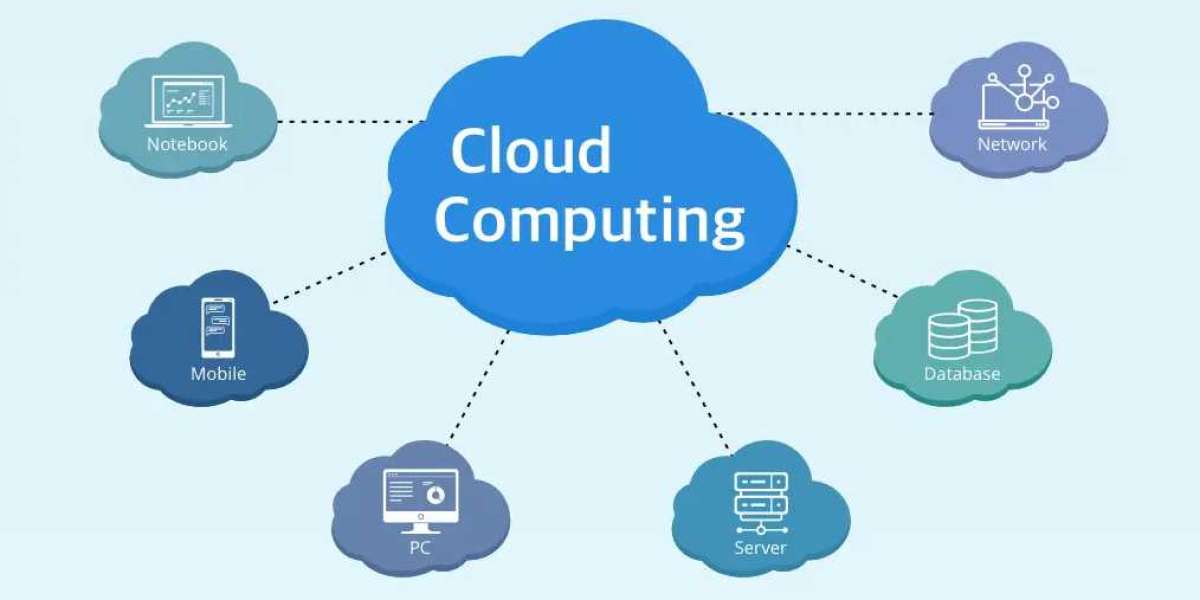Cloud computing, a transformative paradigm in the realm of information technology, has redefined how businesses, governments, and individuals access, store, and manage data. Over the past few decades, it has emerged as a cornerstone for innovation, enabling the seamless delivery of computing resources via the internet. In this blog, we will delve deep into the concept, history, architecture, types, benefits, challenges, and future of cloud computing, offering a comprehensive understanding of this groundbreaking technology.
1. What is Cloud Computing?
Cloud computing is the on-demand delivery of IT resources over the internet with pay-as-you-go pricing. Instead of owning and maintaining physical servers or data centers, businesses can access storage, computing power, and other services as needed from cloud providers.
The cloud operates on three primary principles:
- Scalability: Resources can be scaled up or down based on demand.
- Cost-effectiveness: Pay only for what you use, eliminating the need for hefty upfront investments.
- Accessibility: Data and services are accessible from anywhere with an internet connection.
2. A Brief History of Cloud Computing
The roots of cloud computing date back to the 1960s, with the advent of time-sharing and virtualization. Here’s a timeline of its evolution:
- 1960s: John McCarthy, a pioneer in computer science, proposed the concept of computing as a public utility.
- 1970s-1980s: Companies like IBM and DEC introduced mainframes and virtual machines, laying the groundwork for multi-user computing.
- 1990s: The rise of the internet and SaaS (Software as a Service) models, such as Salesforce, began to popularize the concept of delivering applications online.
- 2006: Amazon launched Amazon Web Services (AWS), introducing Elastic Compute Cloud (EC2), a significant milestone that established cloud computing as we know it today.
- 2010s: The explosion of big data, AI, and IoT drove massive adoption of cloud services, with players like Microsoft Azure, Google Cloud, and Alibaba Cloud entering the market.
3. The Architecture of Cloud Computing
Cloud computing architecture is composed of several layers, each serving a distinct function:
- Frontend Layer:
- The interface that users interact with.
- Includes web browsers and mobile apps.
- Backend Layer:
- The backbone of the cloud, consisting of servers, storage, and databases.
- Managed by cloud providers.
- Middleware:
- Connects frontend and backend layers.
- Handles tasks like API management, authentication, and messaging.
- Network:
- Ensures seamless communication between devices and the cloud infrastructure.
Cloud infrastructure relies heavily on virtualization, containerization, and orchestration tools like Kubernetes to maximize resource utilization and scalability.
4. Types of Cloud Computing
There are several types of cloud computing based on deployment models and services offered:
A. Deployment Models
Public Cloud:
- Hosted by third-party providers like AWS, Microsoft Azure, and Google Cloud.
- Accessible to anyone willing to pay for the service.
- Ideal for businesses seeking cost efficiency.
Private Cloud:
- Exclusively dedicated to a single organization.
- Offers enhanced security and control.
- Suitable for industries with stringent compliance requirements, such as finance and healthcare.
Hybrid Cloud:
- Combines public and private cloud environments.
- Provides flexibility by allowing data and applications to move between the two.
Multi-Cloud:
- Involves using multiple public cloud providers.
- Reduces dependency on a single vendor and enhances disaster recovery.
B. Service Models
Infrastructure as a Service (IaaS):
- Provides virtualized computing resources like servers, storage, and networking.
- Examples: AWS EC2, Google Compute Engine.
Platform as a Service (PaaS):
- Offers development platforms and tools to build, test, and deploy applications.
- Examples: Microsoft Azure App Services, Google App Engine.
Software as a Service (SaaS):
- Delivers software applications over the internet on a subscription basis.
- Examples: Salesforce, Microsoft 365, Dropbox.
Functions as a Service (FaaS):
- A subset of PaaS focusing on serverless computing, where developers only worry about code.
- Examples: AWS Lambda, Google Cloud Functions.
5. Benefits of Cloud Computing
Cloud computing offers a plethora of advantages that have propelled its widespread adoption:
A. Cost Efficiency
- Eliminates the need for expensive hardware and maintenance.
- Pay-as-you-go models optimize spending.
B. Scalability and Flexibility
- Businesses can scale resources up or down depending on demand.
- Supports agile development and innovation.
C. Accessibility and Collaboration
- Enables remote work and global collaboration.
- Centralized data allows multiple users to access and edit files simultaneously.
D. Security
- Leading cloud providers invest heavily in security measures like encryption, firewalls, and compliance certifications.
E. Disaster Recovery and Backup
- Automatic data replication ensures business continuity even during failures.
F. Environmental Impact
- Efficient resource allocation and energy use reduce the carbon footprint compared to traditional IT setups.
6. Challenges of Cloud Computing
While cloud computing has revolutionized IT, it is not without its challenges:
A. Security Concerns
- Data breaches and cyberattacks remain significant risks.
- Organizations must ensure robust encryption and access controls.
B. Compliance and Legal Issues
- Varying regulations across countries can complicate cloud deployments.
- Industries like healthcare and finance face stricter compliance requirements.
C. Downtime
- Dependence on internet connectivity makes businesses vulnerable to outages.
D. Vendor Lock-in
- Switching providers can be costly and complex due to proprietary tools and formats.
E. Cost Management
- While the cloud is cost-effective, poor resource management can lead to unexpected bills.
7. Applications of Cloud Computing
The versatility of cloud computing extends across industries, enabling groundbreaking innovations:
A. Business
- CRM and ERP systems (e.g., Salesforce, SAP) streamline operations.
- E-commerce platforms like Shopify rely on the cloud for scalability.
B. Education
- Cloud-based learning management systems (e.g., Moodle, Google Classroom) facilitate remote education.
- Enables access to virtual labs and resources.
C. Healthcare
- Supports telemedicine, electronic health records (EHRs), and genomic research.
- Enhances patient care through AI-driven diagnostics.
D. Entertainment
- Powers streaming platforms like Netflix, Spotify, and Twitch.
- Facilitates online gaming with services like Google Stadia.
E. Artificial Intelligence and Big Data
- Provides the computational power needed for AI training and big data analytics.
- Examples: Autonomous vehicles, fraud detection, and predictive analytics.
8. The Future of Cloud Computing
The cloud continues to evolve, with emerging trends promising even greater innovation:
A. Edge Computing
- Combines cloud computing with edge devices to process data closer to the source.
- Reduces latency and improves real-time analytics.
B. Multi-Cloud and Hybrid Solutions
- Businesses increasingly adopt multi-cloud strategies to balance flexibility and reliability.
C. Quantum Computing
- Cloud-based quantum services (e.g., IBM Quantum, AWS Braket) are paving the way for breakthroughs in computation.
D. AI and Automation
- AI-driven cloud platforms will further optimize resource allocation and security.
E. Sustainability
- Cloud providers are adopting green energy solutions to reduce environmental impact.
9. Key Players in the Cloud Ecosystem
The cloud computing landscape is dominated by a few major providers:
- Amazon Web Services (AWS): The market leader with a vast array of services.
- Microsoft Azure: Known for its enterprise-grade solutions and seamless integration with Microsoft products.
- Google Cloud: Excels in AI, machine learning, and data analytics.
- IBM Cloud: Focused on hybrid cloud and AI-driven solutions.
- Oracle Cloud: A major player in database and enterprise solutions.
10. How to Get Started with Cloud Computing
For individuals or businesses looking to embrace the cloud, here’s a roadmap:
Assess Needs:
- Determine your objectives and requirements.
- Choose the appropriate service and deployment model.
Select a Provider:
- Compare offerings from major cloud providers.
- Consider factors like pricing, features, and support.
Plan Migration:
- Develop a migration strategy.
- Identify which applications and data to move first.
Implement Security Measures:
- Use encryption, multi-factor authentication, and compliance tools.
Monitor and Optimize:
- Continuously monitor usage and optimize resource allocation.
Conclusion
Cloud computing is more than just a technological shift; it’s a catalyst for innovation and growth. By breaking down barriers to technology, it empowers businesses to focus on what truly matters—delivering value to their customers. As we look to the future, the cloud will undoubtedly play a central role in shaping the digital landscape, fostering advancements in AI, IoT, and beyond. Embracing the cloud is not just an option but a necessity for those aiming to thrive in the modern era.
So, are you ready to embark on your cloud journey? The possibilities are limitless.











